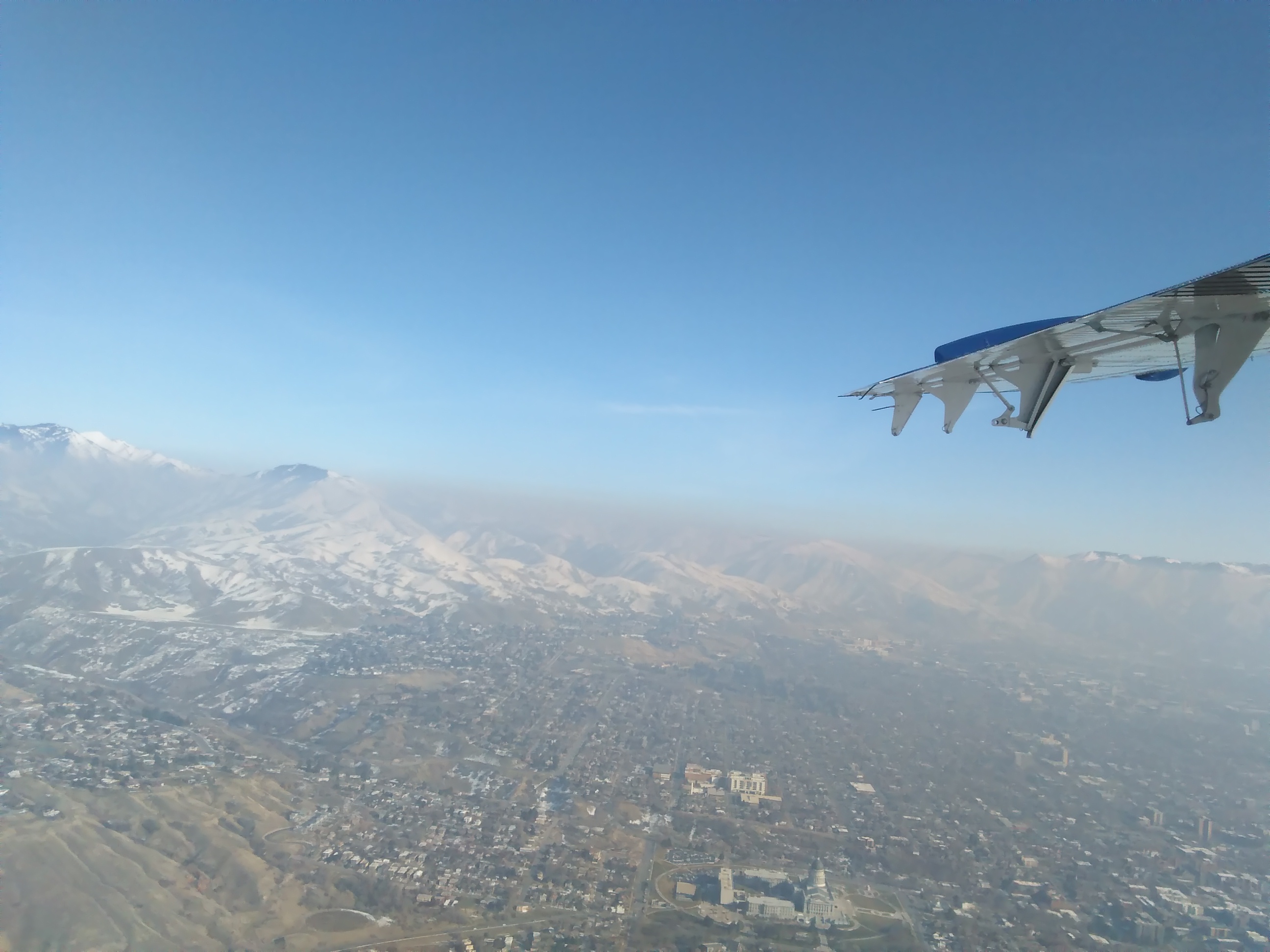[This release is adapted from material provided by CIRES and NOAA]
The processes that create ozone pollution in the summer can also trigger the formation of wintertime air pollution, according to a new study from researchers at the University of Colorado Boulder and NOAA, in partnership with the University of Utah. The team’s unexpected finding suggests that in the U.S. West and elsewhere, certain efforts to reduce harmful wintertime air pollution could backfire.
Specifically, targeting nitrogen oxides emitted by cars and power plants could initially actually increase harmful air pollution, the researchers reported in their new paper, out today in the journal Geophysical Research Letters.
“This insight arose from some of the most extensive measurements of the chemistry behind our wintertime pollution problem,” said the University of Utah’s John Lin, a professor of atmospheric sciences and co-author of the study.
“This is contrary to what is typically assumed and suggests a new way to mitigate this type of pollution in Salt Lake City, Denver and beyond,” said Caroline Womack, a CIRES scientist working in the NOAA Earth System Research Laboratory and lead author of the study.

Wintertime air pollution in the Salt Lake Valley.
Regulations and cleaner technologies have steadily improved air quality in the United States. Yet valleys in Western states still experience high levels of particulate matter (PM2.5), or microscopic droplets suspended in air, during the winter. In Utah’s urban Salt Lake Valley, wintertime levels of PM2.5exceed national air quality standards an average of 18 days per year. Denver often has the same problem in winter, when brown clouds hang over the city.

PHOTO CREDIT: S. Brown, Utah Winter Fine Particulate Study (UWFPS) 2017.
Utah Winter Fine Particulate Study 2017 participants with Twin Otter N48RF.
A major component of the Salt Lake Valley and Denver PM2.5 pollution is ammonium nitrate aerosol, which forms from emissions of nitrogen oxides, volatile organic compounds (VOCs), and ammonia. Those reactions happen during winter temperature inversions, when warm air aloft traps cold air below, concentrating pollutants.
To combat wintertime PM2.5 pollution, scientists first needed a detailed understanding of the chemical processes that produce it. So in 2017, researchers from the Cooperative Institute for Research in Environmental Sciences (CIRES) and NOAA partnered with the University of Utah, the Utah Department of Environmental Quality, and others to measure PM2.5 and its precursor emissions at several ground sites in and around the Salt Lake Valley, including a site on top of the College of Mines and Earth Sciences’ William Browning Building on the U campus. Using the NOAA Twin Otter—a small, instrumented research airplane—the team also collected air samples throughout the pollution layer in the critical altitude region where particulate matter forms.
Watch a time-lapse of one of the Twin Otter’s flights around the Salt Lake Valley here:
Based on the observations from the field campaign, Womack, Lin and their colleagues found that ozone and ammonium nitrate aerosol pollution are closely related, connected by the unusually named parameter “total odd oxygen.” Since the same chemical processes that form ozone pollution in the summer produce ammonium nitrate pollution in winter, strategies that have effectively controlled ozone could also limit production of ammonium nitrate.
In western valleys with high levels of ammonium nitrate aerosol, mitigation efforts have tended to focus first on controlling one component of the pollution: nitrogen oxides from burning fossil fuels. The researchers found this approach may actually increase ammonium nitrate pollution, at least initially. A potentially more effective way to reduce PM2.5 pollution would be to limit VOCs, according to the new assessment.
“No one has looked at air pollution in winter before in this way. Our findings could hold true in other areas with severe winter aerosol pollution, including mountain valleys across the US West and urban areas in East Asia, and Europe,” said Womack. PM2.5 pollution is a major cause of premature death worldwide—and besides negatively affecting human health, PM2.5 also affects agricultural yields, visibility and possibly Earth’s climate.
Up next for the research team is a follow-on study under planning that will look at wintertime air pollution across the entire U.S. West.
Find the full study here. https://doi.org/10.1029/2019GL082028




